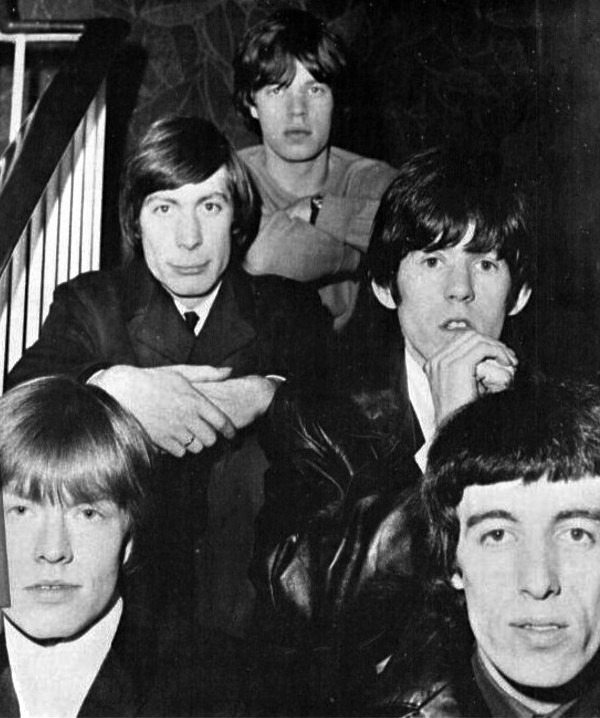In the year 1960, nearly half of the population of America is under 18 years old. It is a young society and the most prosperous generation in U.S. history. During those times, American teenagers have $22 billion a year at their disposal, which is equivalent to $140 billion when compared to 2005 dollars. And in the 1960s, radio, film, television, and books carry the essence of American pop culture.
The best-selling books in the 60s often reflect the most pressing concerns of the society. Some of the ultimate reads of the decade include Valley of the Dolls and To Kill a Mockingbird. But at night, instead of reading books, television is the new centerpiece. It was in the early 60s when color television arrived, and it was rapidly embraced compared to the old black-and-white sets. And by the end of the decade, almost all households have at least one colored TV.
When it comes to music, The Beatles are heard everywhere in this decade. People are using devices, such as pocket-sized transistor radios, eight-track stereos in cars, and portable record players to listen to music.
If you are wondering what other things and events are prevalent in the 1960s, you’re in the right place. Today, we are giving you some of the most interesting trivia about 1960s pop culture.
The Rolling Stones, “I Can’t Get No (Satisfaction)” could not have been first recorded in May of 1965.’
A lot of people today rely on the information on Wikipedia when looking for facts. However, Joe Condon pointed out an interesting fact. During the 1960s, he was one of the top-rated DJs at WTRY in Troy, NY. It was popular when it comes to playing big hits very early, including the Beatles and the Rolling Stones.
WTRY was the very first to play what would become one of the greatest rock ‘n roll songs of all time, which is “Satisfaction.” The date was April 29, 1965. But when you read it on Wiki, and other authoritative song authors and their books, they were claiming that the song was recorded on May 10, which is not possible because WTRY started playing the tune on April 29. Maybe the later dates were re-dos, and WTRY was most-likely playing a test-pressing. Joe Condon also confirmed that the station was playing an acetate disc.
When are wireless microphones introduced?
Wireless microphones are used virtually everywhere: concerts, TV, movies, live shows, schools – you name it. The days of someone holding a microphone with a cord attached are long gone. It is often asked, when did the age of “wireless” mics begin?
Although they took a long time to catch on (mainly because of their size), wireless microphones were available as early as 1960. Sony was out front, and they were selling the microphone (with the transmitter) and receiver for $250.00. This means that “The Remarkable Sony Radio Wireless Microphone” was way ahead of its time.
The hours between 6pm and 11pm could be moneymakers for radio stations.
Since Alan Freed began playing rock ‘n roll on evening radio, there was no doubt, the evening DJ could bring in tons of ratings and revenue. Back then, many radio stars were born out of the 6pm-11pm area time slot, even with prime-time television viewing. Mostly teens and young adults listened, but, if you had them, you could have big ratings. At times, their average audience share could be bigger than the rest of the station.
The teen DJ set the tone for the next morning as well. If you listened at night, chances are, you had the same station tuned-in the following morning.
Every city had these night DJ stars, and New York City was no exception. Besides Alan Freed, there was Paul Sherman, Bruce Morrow, Murray the K, Scott Muni, B. Mitchel Reed, Gary Stevens, George Michael, Chuck Leonard, and others.
Unlike today, this could be huge advertising revenue. Holding the 7 to 11pm shift at WMCA, Gary Stevens was then, New York City’s #1 evening personality. And within a year, he had served-up over 200 sponsors, which is unheard of in modern radio. Stevens just came off 20 shares in the New York radio ratings, beating big-time rival “Cousin” Bruce Morrow with a 12 share.
The 1960s was an era when all evening radio was live. In many places today, it can be voice-tracked, especially in medium and smaller markets, and some large markets contain voice-tracking between 6pm and 6am. Most of those who grew up during the 1960′s and 1970′s can name their favorite DJ, and usually, they came from the evening hours. Do you remember?
The popular ABC-TV station channel 7 logo.
If you grew up in the 1960s, you might remember the “Circle 7” TV channel logo. It is on WABC-TV, KGO-TV, WXYZ-TV, and WLS-TV, KABC-TV.
It’s has been used since 1962 when KGO-TV hired an ad agency to design it. Quickly, WABC-TV New York, WXYZ-TV Detroit, and WBKB-TV (later WLS-TV) in Chicago & KABC-TV Los Angeles began using the circle 7 logo. All are channel 7 TV stations, and at the time, all five were owned by ABC. Today, they still use it.
Just after this time, WPIX-TV New York liked it so much that they had their version, which is a circle around an “11″, which was their assigned channel number. Many other stations also did variations, such as WKBW-TV (channel 7) in Buffalo. But, the original is still the best.
Who is the real Fred Flintstone?
The Flintstones is a very popular cartoon series that was launched in the 1960s. It’s really no mystery that the voice of the original Fred Flintstone and the one that set the character forever is that of the late actor Alan Reed. He’s probably known for the most memorable single cartoon voice of all time.
However, it’s really difficult to get a hold of Reed. You’d see him in a movie, and flash, he was gone. You wanted to hear his voice, because, really, Fred Flintstone is much more prominent than Alan Reed ever was. Well, Reed did lots of movies and television, but let’s face it, more people know his voice because of “The Flintstones.” He also looks a bit like the cartoon character. Reed died in 1977, and newer Flintstone cartoons used an imitation of Reed, but the original is always the best.
Real police lineups were featured on New York television stations.
Back in 1962, TV station WUHF-TV (channel 31) and the NYPD had a great idea. That was to transmit police line-ups on the station and then set up remote receivers in various locations throughout New York City. This way, the line-up could be viewed remotely – Real criminals on TV. Yes, the “broadcasts” were scrambled at the time, which was another novelty. The idea was way ahead of its time. Apparently, the idea was to make it easier for folks to identify “criminals” and, thus, get better results.
These are some of the most interesting trivia about 1960s pop culture. It is the era where people are just starting to get used to television shows and new music from bands and artists that were just emerging during those times.
Related posts:
- Highlights of the Major Pop Culture Trends of the 1960s
- Pop Culture in Review for the Year 1960
- Pop Culture in Review for the Year 1961
- Pop Culture in Review for the Year 1962
- Pop Culture in Review for the Year 1963
- Pop Culture in Review for the Year 1964
- Pop Culture in Review for the Year 1965
- Pop Culture in Review for the Year 1966
- Pop Culture in Review for the Year 1967
- Pop Culture in Review for the Year 1968
- Pop Culture in Review for the Year 1969


